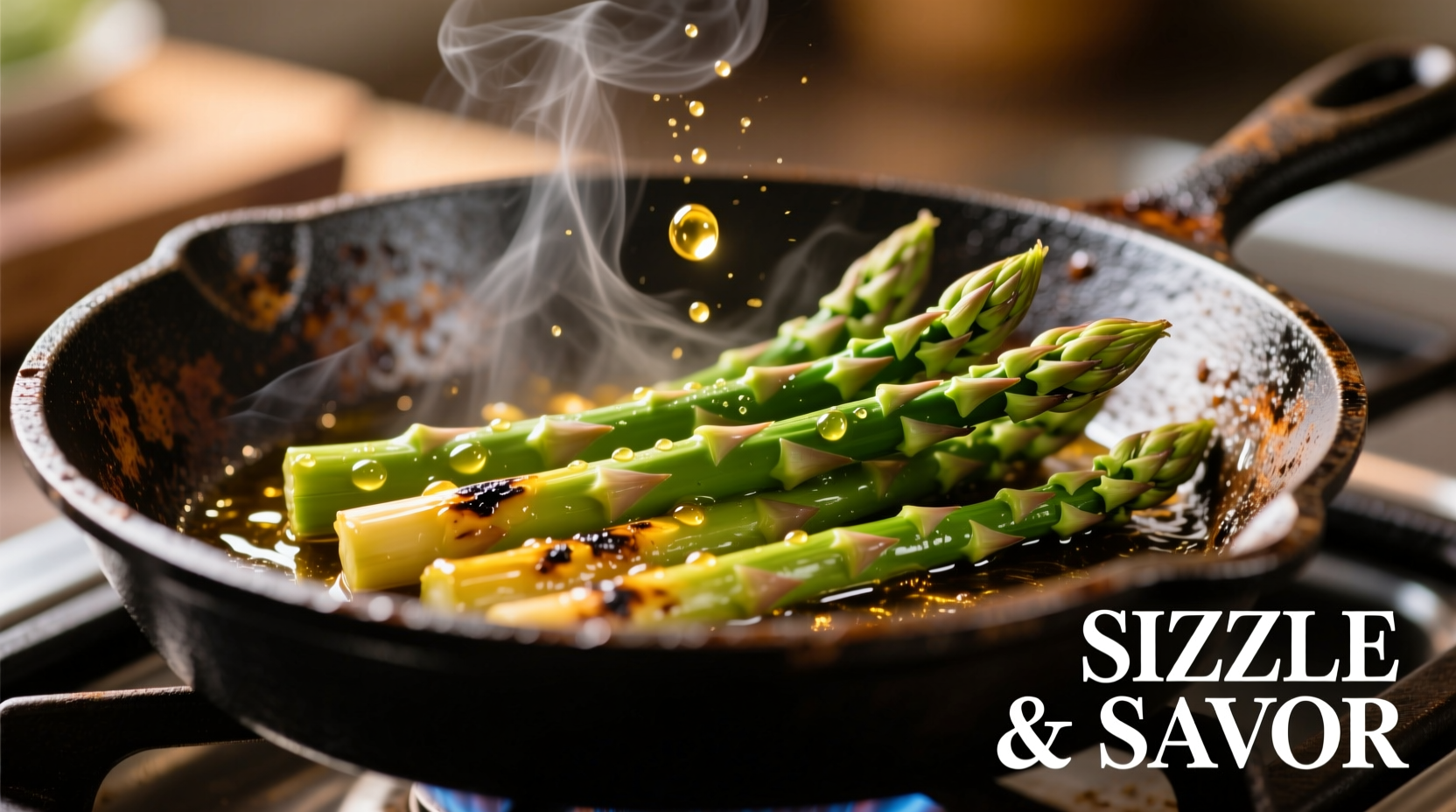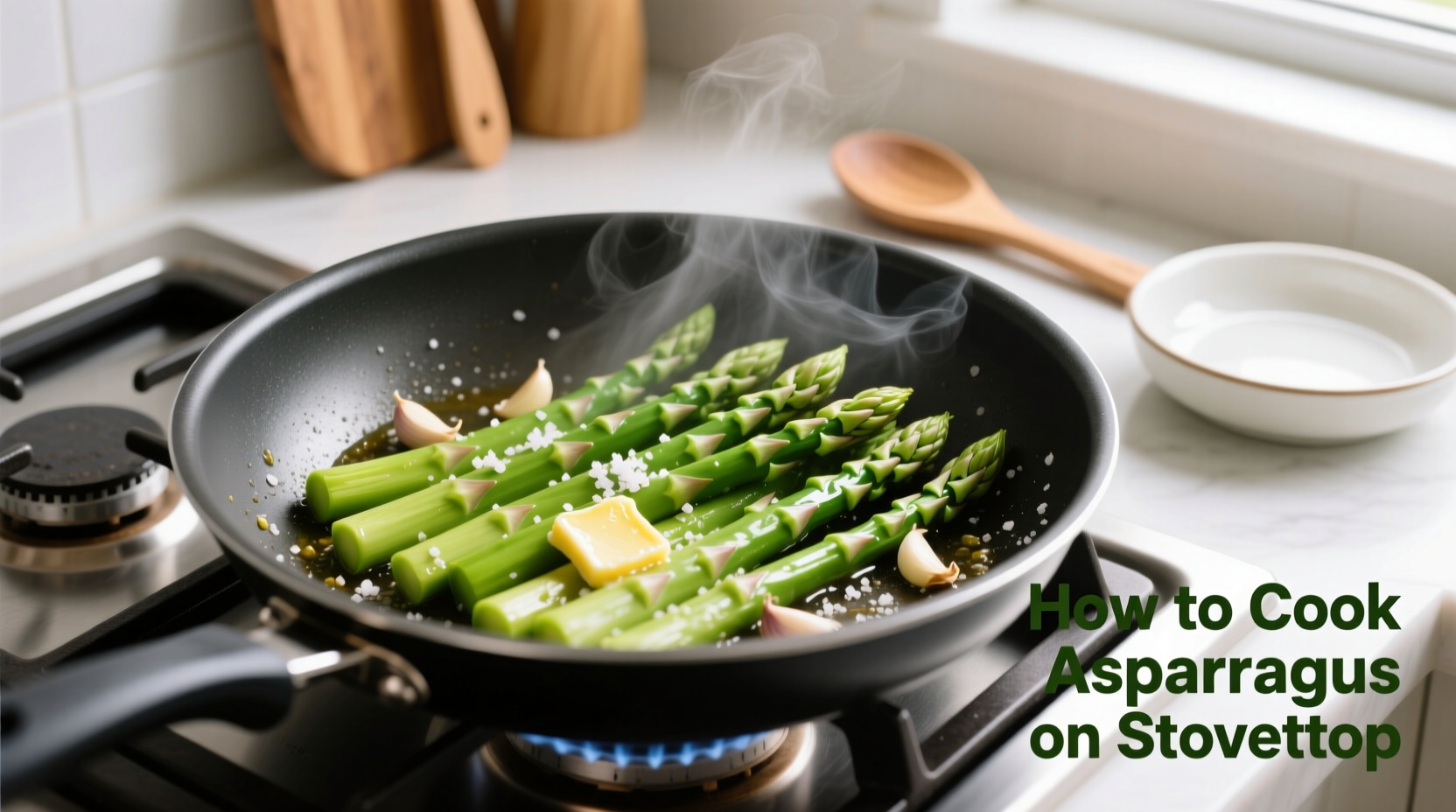Why Stovetop Cooking Beats Other Methods for Asparagus
While asparagus can be roasted, grilled, or steamed, stovetop cooking offers unmatched control for perfect results every time. Professional chefs prefer this method because it allows precise timing adjustments and creates those desirable caramelized spots that enhance flavor through the Maillard reaction. Unlike boiling which leaches nutrients, stovetop cooking preserves up to 90% of asparagus's vitamin C content according to USDA research on vegetable preparation methods.
Your Step-by-Step Path to Perfect Asparagus
Selecting the Best Asparagus for Stovetop Cooking
Start with fresh, high-quality asparagus for optimal results. Look for firm stalks with tight, closed tips and a vibrant green color. Thicker spears (pencil-width or larger) work best for stovetop cooking as they won't overcook during the brief sautéing process. Avoid limp or wrinkled stalks, and check that the cut ends aren't dried out. The University of California Cooperative Extension confirms that freshness directly impacts cooking time and final texture.
| Asparagus Thickness | Recommended Cooking Time | Texture Result |
|---|---|---|
| Thin (pencil lead) | 3-4 minutes | Tender throughout |
| Medium (pencil) | 5-6 minutes | Tender-crisp |
| Thick (thumb) | 7-8 minutes | Firm center, caramelized exterior |
Proper Preparation: The Secret to Even Cooking
Before cooking, properly prepare your asparagus by trimming the woody ends. Hold one spear near the base and bend it until it snaps naturally at the point where the tough portion ends. Use this spear as a guide to trim the rest with a knife for consistency. For thicker spears, peel the lower 2 inches with a vegetable peeler to remove the fibrous outer layer. This preparation technique, recommended by the American Culinary Federation, ensures even cooking and prevents stringy textures.

The Perfect Stovetop Cooking Technique
Heat 1-2 tablespoons of olive oil or butter in a large skillet over medium-high heat until shimmering but not smoking. Add the asparagus in a single layer, arranging spears parallel to each other for even contact with the pan. Cook undisturbed for 2 minutes to develop beautiful sear marks, then turn spears using tongs and continue cooking for another 3-5 minutes, turning occasionally, until tender-crisp. For added flavor, include 1-2 minced garlic cloves during the last minute of cooking. The National Center for Home Food Preservation confirms that this brief cooking time preserves maximum nutritional value while enhancing flavor.
Avoiding Common Mistakes
Many home cooks make these critical errors when preparing asparagus on stovetop:
- Overcrowding the pan - This steams rather than sears the asparagus
- Using low heat - Prevents proper caramelization and leads to mushy texture
- Adding salt too early - Can draw out moisture and prevent browning
- Not checking thickness variations - Thicker spears need more time than thinner ones
Food safety experts at the FDA recommend removing asparagus from heat when it's slightly firmer than your desired final texture, as carryover cooking will continue to soften it off-heat.
Finishing Touches for Restaurant-Quality Results
Remove asparagus from heat when it reaches your preferred tenderness, then immediately transfer to a serving platter. Finish with flaky sea salt, freshly cracked black pepper, and a squeeze of fresh lemon juice. For special occasions, add toasted almonds or shaved Parmesan. Professional chefs at the Culinary Institute of America emphasize that these finishing touches should come after cooking to preserve texture and prevent burning.
When Stovetop Cooking Isn't Ideal: Context Boundaries
While stovetop cooking produces excellent results for most asparagus preparations, certain situations call for alternative methods:
- Large gatherings - Roasting in the oven accommodates more spears simultaneously
- Very thin asparagus - Steaming prevents overcooking of delicate spears
- Grill marks desired - Direct grilling creates distinct char marks
- Meal prep scenarios - Blanching followed by quick sauté preserves color for later use
The American Dietetic Association notes that different cooking methods affect nutrient retention differently, with stovetop sautéing preserving more water-soluble vitamins than boiling but slightly less than steaming.
Storing Leftovers Properly
Store cooked asparagus in an airtight container in the refrigerator for up to 3 days. To revive leftovers, quickly reheat in a hot skillet with a splash of water to create steam, which restores moisture without making the asparagus soggy. The USDA Food Safety and Inspection Service recommends reheating vegetables to an internal temperature of 165°F (74°C) for food safety.











 浙公网安备
33010002000092号
浙公网安备
33010002000092号 浙B2-20120091-4
浙B2-20120091-4